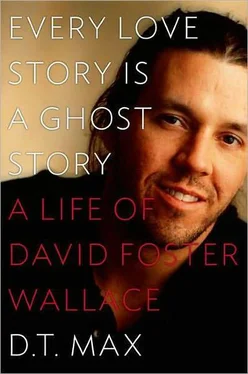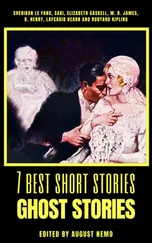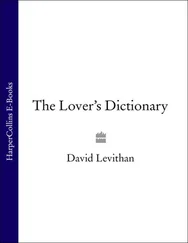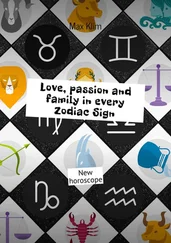Wallace arrived in Tucson in mid-August. Arizona’s beauty was revelatory to him. The light was different, the dunelike mountains “lunar.” “They,” he told his college friends in an audio letter they sent to one another that fall, “catch the sun in really pretty ways, really interesting ways.” “Accidents in Tucson,” he continued, “are basically people hypnotized by the sun, looking out through the screen.” He thought he could be happy there, amid the browned-out lawns and the cactus-dotted foothills.
He was ready for a fresh start. Earlier that year, he and Perkins had finally ended their relationship. At first Wallace found the breakup a relief, but then waves of guilt followed. He saw that his behavior at Amherst had ruined the relationship with the woman who had stuck by him at his lowest point.
In early summer, he decided to drive back to Amherst from Urbana and pick up Corey Washington, who was planning a visit, and by the time he did he was in a quiet crisis. Like Rick Vigorous in Broom , his imagination had begun to run away with him. Perkins was in Urbana too and the nearness tormented him. What was she doing? he would ask, Washington remembers. Whose car was now in her driveway? Wallace imagined her sleeping with other men. The predicament he was thrown into was not unlike the one brought about by his mother after his first breakdown at Amherst: it came from the same sense, justified or not, that someone on whom he had deeply relied, had betrayed him. They had committed the crime of remaking his reality. Wallace held so fast to his sparse emotional certainties that when they proved unstable, the impact was crushing. Then unleashed feelings of hurt and confusion would go round and round, bending in on themselves, mixing with guilt, until his brain reached a point of exhaustion.
Washington saw his friend withdraw. Wallace spoke softly and soberly, without humor. They watched hours of television together, Wallace seeming to gain comfort from the TV; his friend held his hand and tried to maintain contact with him. Offstage there were conversations between Wallace’s parents about what to do. To Washington they seemed surprisingly unsurprised, but then they had been down this road twice before in the past few years. After two days, they took their son to a local hospital, apologizing deeply to Washington, who took a bus home to Amherst.
Wallace stayed at the psychiatric unit at Carle Hospital for several weeks. The doctors likely considered the possibility that he suffered from bipolar disorder, manic depression. That he was crashing after an enormously productive spring would lend credence to that diagnosis, but they decided instead to give him Nardil, a MAO inhibitor often used to treat atypical depression. Atypical depression — its key characteristics are unusual sensitivity to social rejection and a quick return to mental health when circumstances improve — was a more welcome diagnosis in Wallace’s eyes. It seemed less a sentence of insanity than the medical acknowledgment of a condition he was already dealing with. But Nardil — Wallace described the pills in a story he wrote in Arizona as “look[ing] just like the tiny round Red Hots we’d all eaten as children”—was an older antidepressant, a 1960s and ’70s staple that came with many dietary prohibitions. He would no longer be able to eat chocolate or drink coffee, nor should he drink alcohol or take drugs. Smoky cheeses and hot dogs were also out, and he was supposed to avoid aged or fermented food in general, as well as liver. If he slipped up, the result would be fierce headaches and potentially dangerous spikes in blood pressure.
The Nardil helped Wallace quickly. By August he was out of the hospital and on a kind of high. On his way to his new school he stopped in Los Angeles to see a young woman he’d been close to at Amherst. Back in college, Wallace had begun a relationship with Andrea Justus, a fine arts major. Justus admired Wallace, by then a storied figure at the college. (In her circle he bore the nickname “the smart guy.”) She had approached him to help her with the language in her thesis, which was about gesture in art. Quickly they became friends. When Justus was given a B-plus by the art history department, Wallace marched into her professor’s office to ask why she hadn’t gotten an A. With Perkins far away, Wallace got more deeply involved with Justus. She loved his talk and his intense gaze — he commented on an eyelash she had pointing off to the side that no one had ever noticed before. The story he told of how he had taken a semester off to cope with the suicide of his best friend particularly moved her. When Justus invited Wallace to stop in California on his way to Tucson, Wallace accepted. In August he came to Los Angeles. Soon after he got to her home in Fullerton, a town in Orange County, Sally Wallace called to tell his friend’s mother that her son was on a powerful antidepressant and had to be careful around certain foods.
What Wallace knew about Southern California came mostly from books, including The Crying of Lot 49 , where the fictional city of San Narciso is described as “a vast sprawl of houses which had grown up all together, like a well-tended crop, from the dull brown earth.” But Wallace was in an upbeat mood and loved the area. “A real blast,” he wrote Washington. Even better was the coastal city of Newport Beach, a “revoltingly tacky and ritzy Venice-like town.” In his gloomier moments, this was the sort of environment he couldn’t tolerate, but the world appeared cheerful and well to him now. The couple went to a party where a small boat took them out and putt-putted around the bay past John Wayne’s house. They spent a night at the Hotel Laguna in Laguna Beach too, and Wallace overcame his fear of sharks enough to go in the ocean for only the second time in his life. This again may have been a tribute to the confidence and the sense of wellness the successful drug treatment was giving him. Justus’s mother was generous and indulgent, not unlike his own. When he did not want to be sociable, he passed the time in his friend’s bedroom, the lights off and the shades down, listening to Squeeze and INXS. He was still adjusting to the antidepressant, which tended to bring him morning highs and afternoon tiredness. (Justus’s father, a physician, was unsurprised to find Wallace asleep in the car while they were touring Los Angeles.) That summer wildfires burned in the region, sending up huge plumes of smoke, and Wallace wrote to Costello how amazed he was to see rich Angelenos walking on the beach admiring the sunset, as the world burned.
After his visit, Wallace drove the eight hours to Tucson with Justus, ready to move into his graduate housing. She had friends in the city and they were having so much fun she thought about moving there too, a proposition that set off warning bells for Wallace. “I’m not ready or able for anything as serious as a Susie situation,” he wrote Washington, “and couldn’t have the obligation of [Andrea’s] being in town because of me.” There were other considerations too. “Most of the girls here are just incredibly beautiful, like a 10,000 member class of ’88,” he wrote. Happily, it turned out Justus was no more serious than he was. “She’s breathtakingly level-headed (Salingerian trope),” Wallace reported, “and so having her here on the sort of level we’ve established would be terrific for me.”
Justus was intrigued by her friend’s impracticality. She helped him to take the money he routinely kept in his sock drawer and open a bank account with it. They visited his future apartment, which he was supposed to share with a student in optical sciences, and found the walls painted “a kind of urine-yellow” and the whole smelling, as Wallace told his friends in his audio letter, of, “in descending order, Lysol, another kind of air freshener, very, very, very old semen and again, urine.” Justus urged him to find someplace else, reminding him he was an adult now. (Wallace to Washington: “Perhaps only half true.”) With the deposit he got back, the two went house hunting. Soon Wallace found a small apartment on North Cherry Avenue, a shabby district a few blocks from the campus. The complex looked like an overgrown Motel-6 and was mostly parking lot, an unattractive part of an unattractive city, “replete with poisonous spiders and dead grass, gravel, violent crime,” as he later wrote Professor Kennick at Amherst.
Читать дальше












